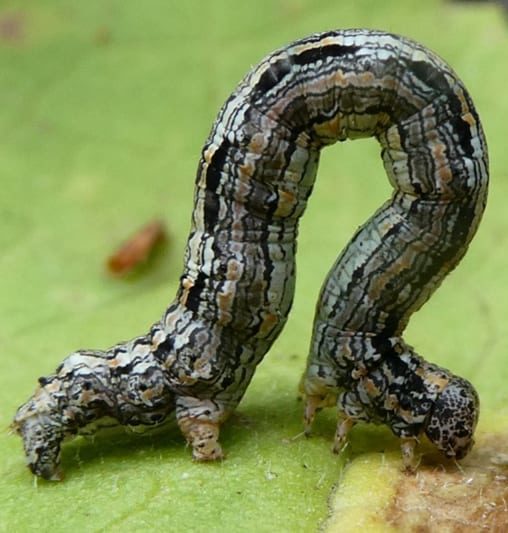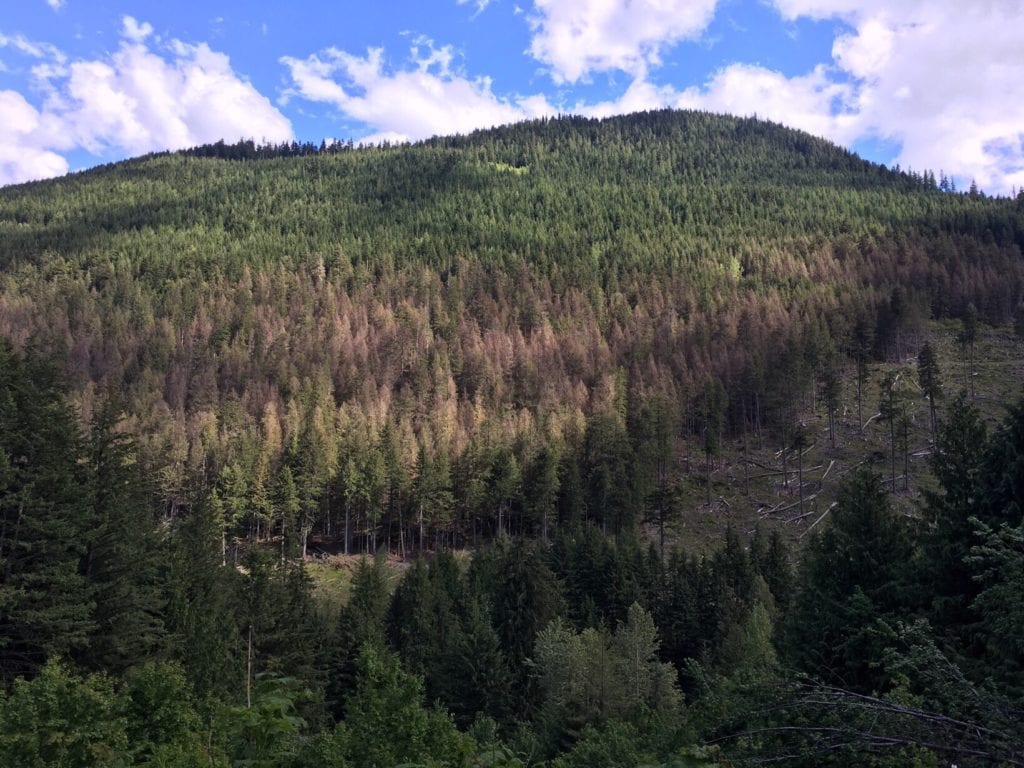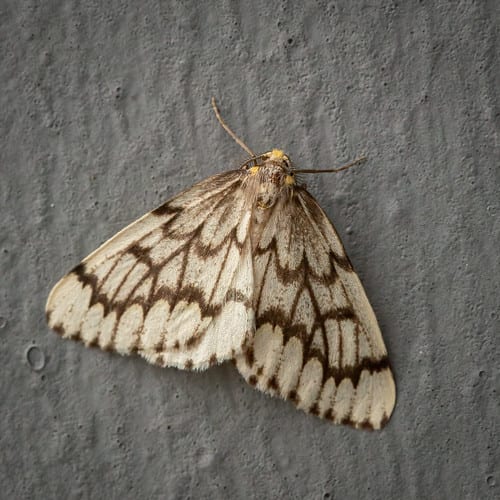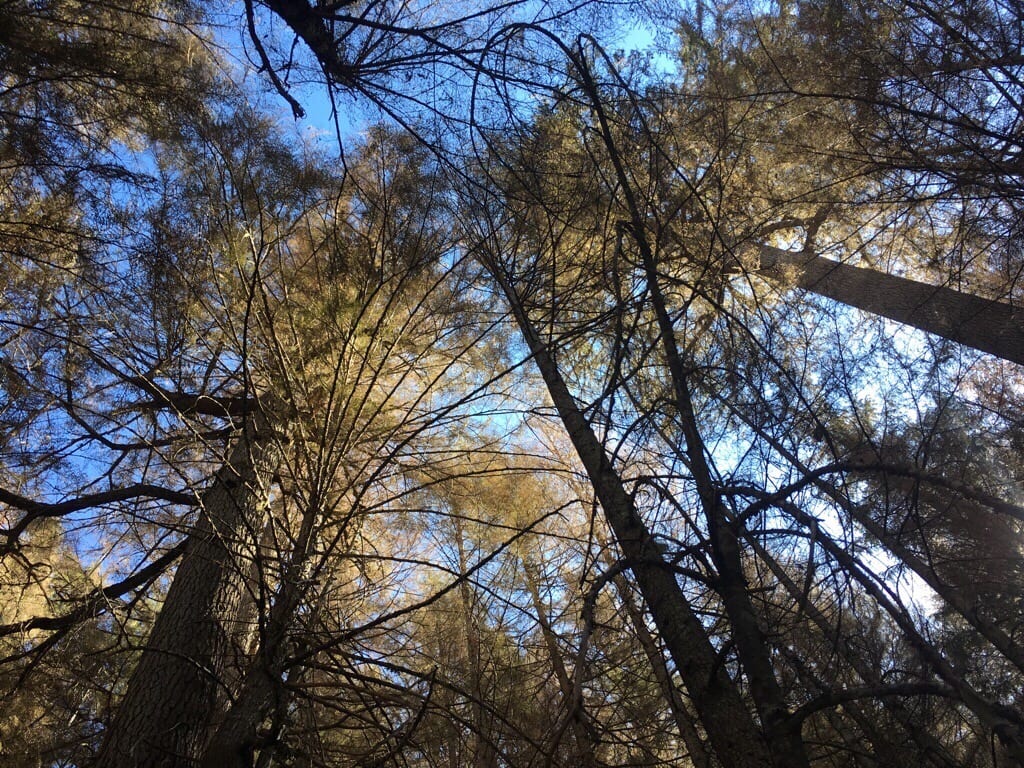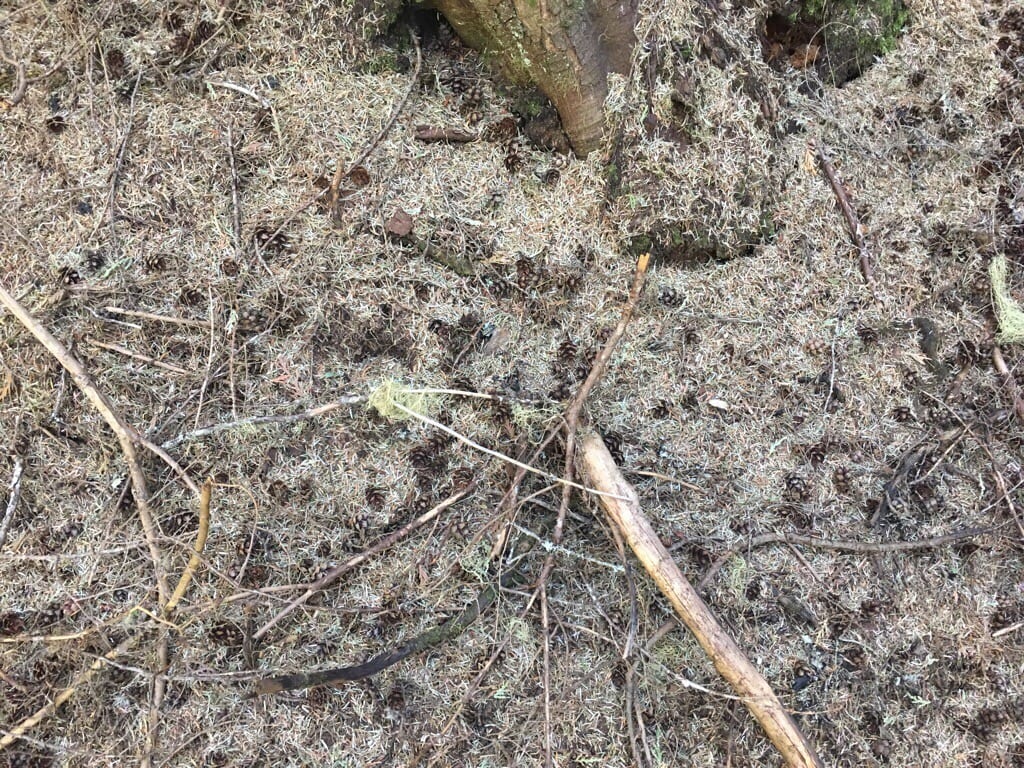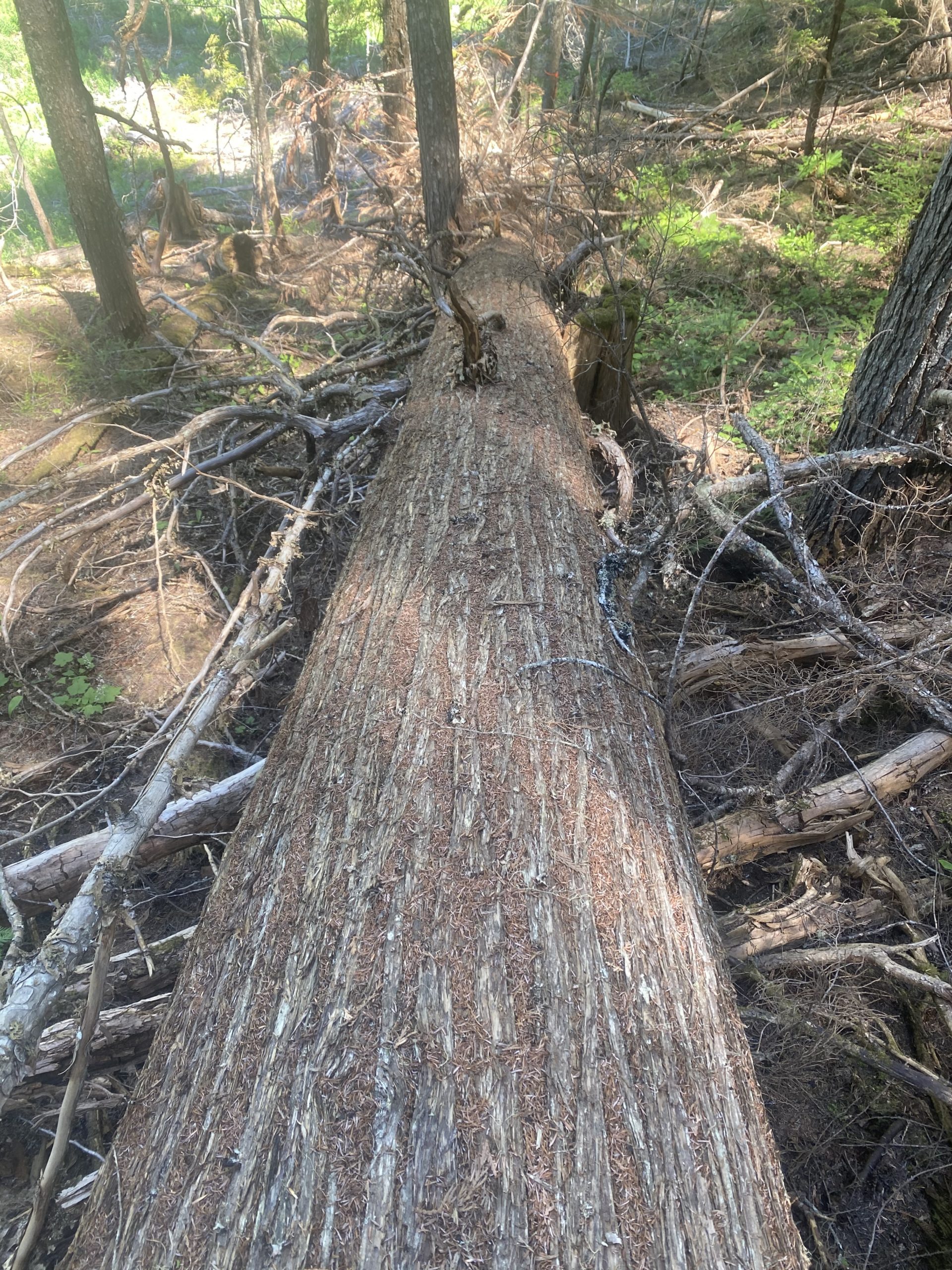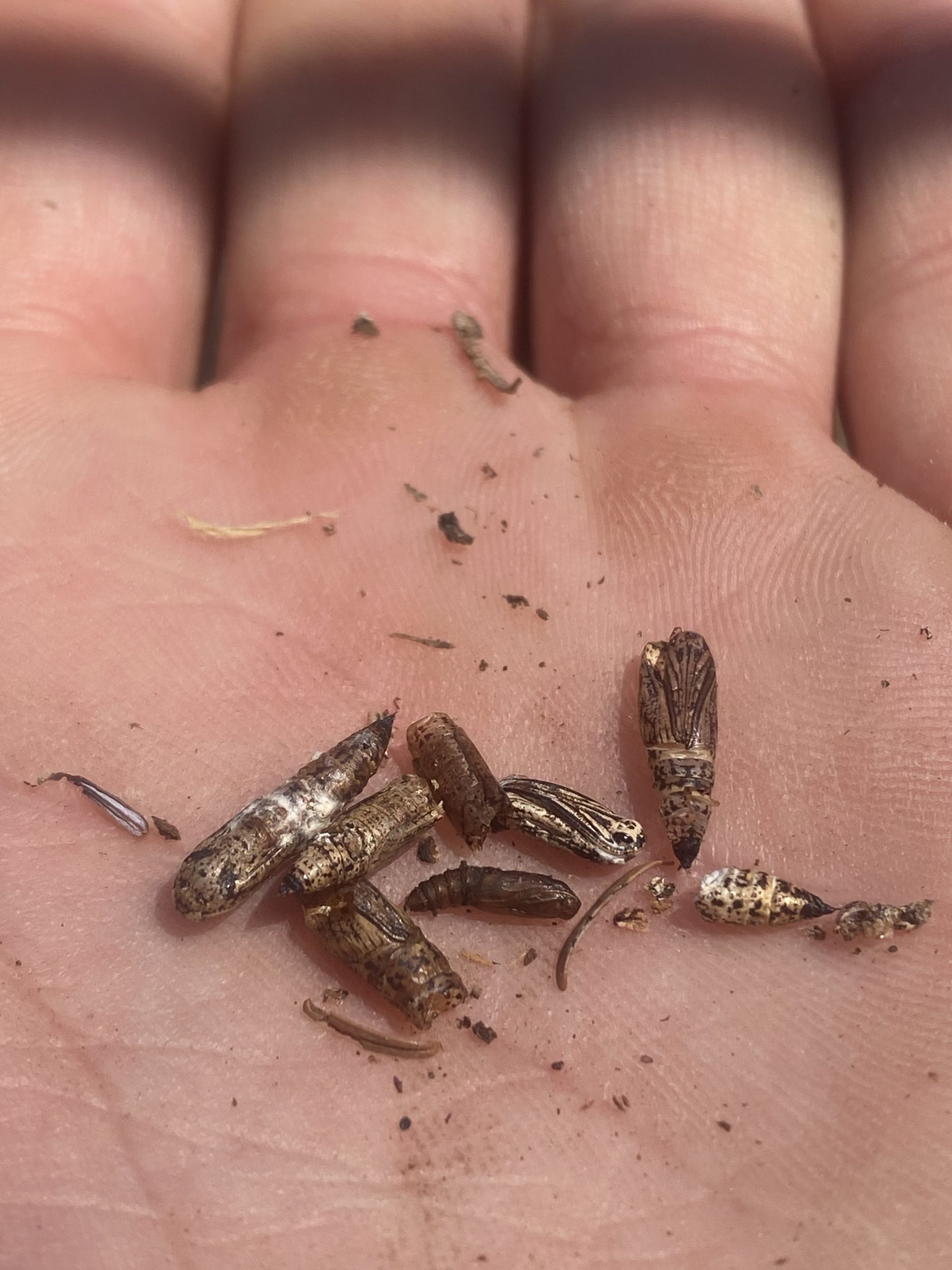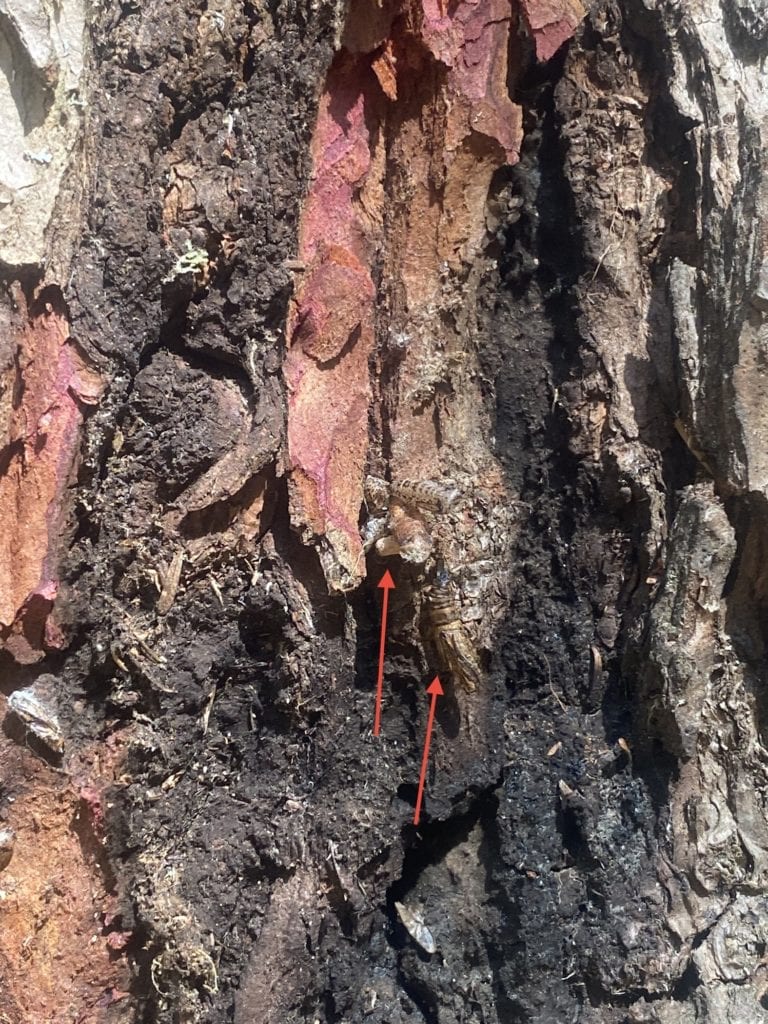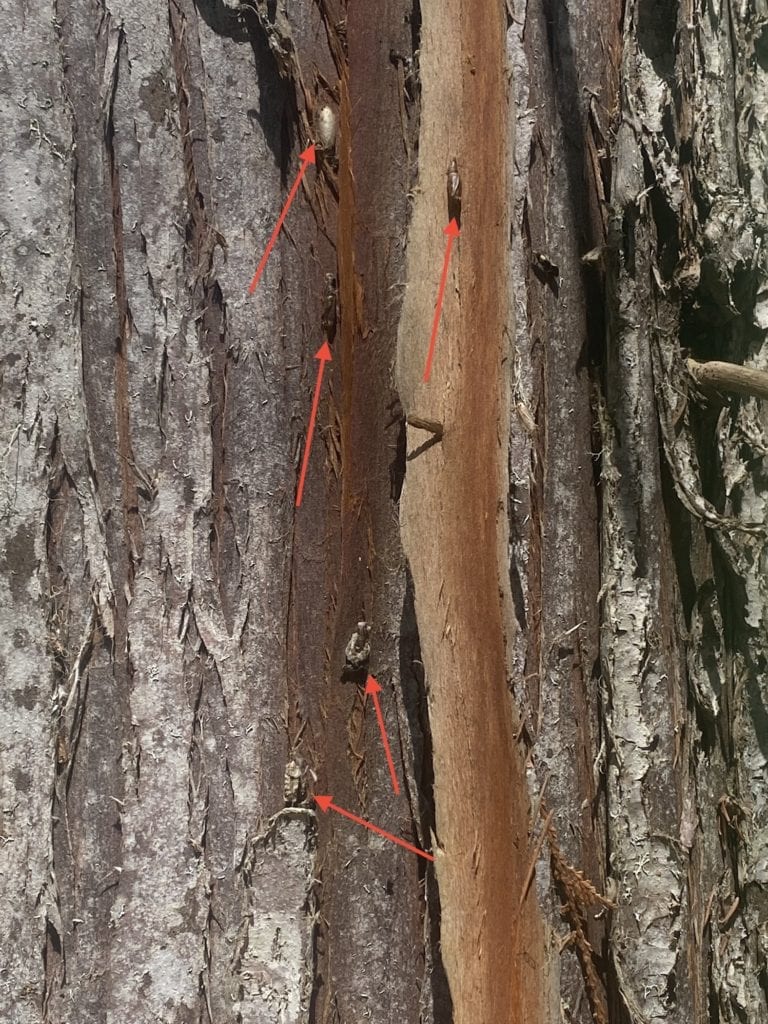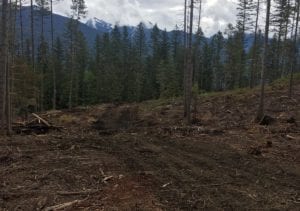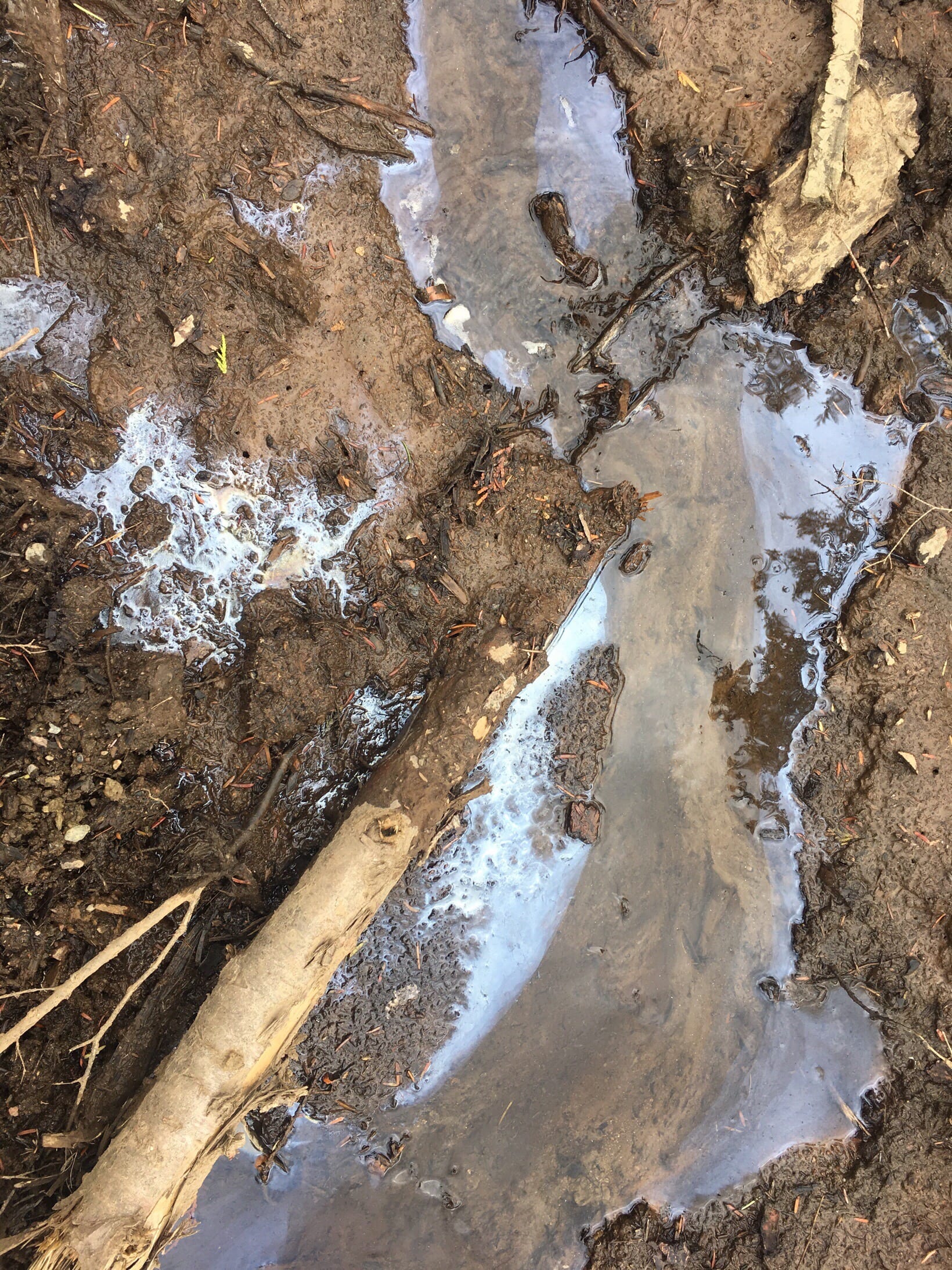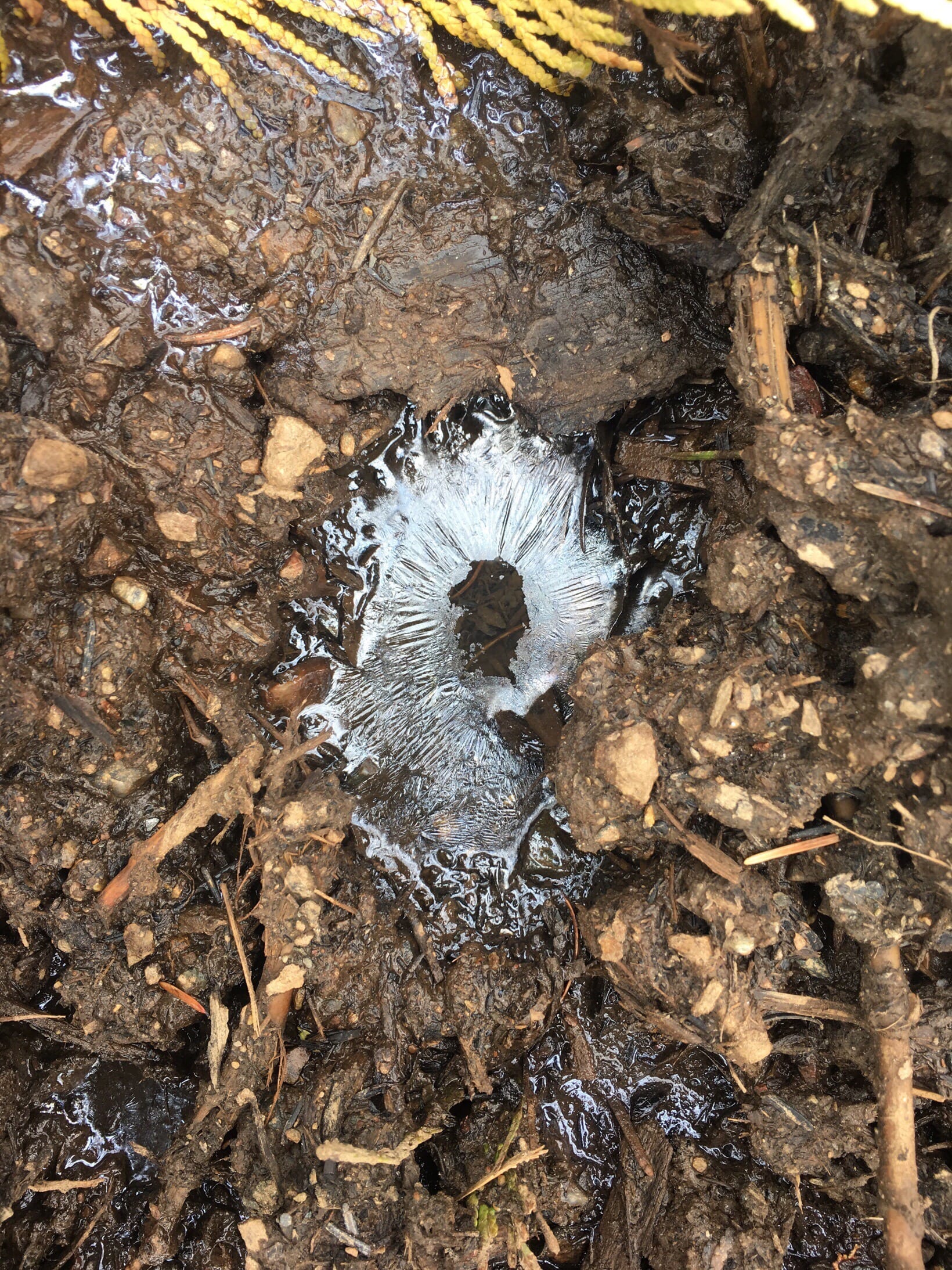The western hemlock looper has historically not been a catastrophic forest insect in our Kootenay Lake landscape. The looper feeds on conifer needles and severely defoliates and in the process often kills all sizes of western hemlock and associated trees in western hemlock stands that are older than 80 years.
It also interacts with other agents, such as bark beetles, to cause tree mortality of defoliated trees. By causing topkill in all sizes of trees, L. fiscellaria lugubrosa contributes to the formation of unique limb structures and facilitates the colonization of living tree boles by stem decay. During outbreaks, high numbers of larvae pupae, and moths provide abundant forage for many species of birds and invertebrates.
The tiny eggs of this species hatch over a period of weeks beginning in June. The looper larvae feed briefly on new foliage and then retreat to older foliage. The larger larvae are very messy feeders, moving about “nipping” foliage (which later dies) and, when disturbed, dropping from the trees onto undergrowth where defoliation is often heaviest. Although much of the defoliation by mature larvae occurs on older foliage, when this is gone new foliage may be stripped as well.
The ground beneath heavily infested trees may also be covered with a mat of “nipped” or partly chewed needles. In late July, larvae begin seeking out protected spots to pupate. The variable, brown and green, spotted pupa has no cocoon and is formed in cracks and crevices on the tree bole, objects nearby or in the litter. Mature larvae “spin down” on silken threads from feeding sites to lower branches and the ground during August and early September to pupate. During this time they may be found crawling over tree trunks and understory vegetation, and loose webbing may be abundant. Pupation occurs in trunk bark crevices, lichens, mosses, or ground debris, usually lasting 10 to 14 days.
Adults generally fly in late August through early October, dying soon after mating and laying eggs.By mid-August, after a pupal period of 2-3 weeks, the frail, tan moths begin to appear and flutter about. In heavily infested stands it is not uncommon to find large numbers of moths resting on trunks of trees and on low deciduous vegetation. These fly readily when disturbed. Moths are present from mid-August to October. Mating takes place on resting sites and “coupled” pairs of moths often show different color variations. The very tiny eggs are deposited singly or in small clusters on foliage, twigs, bark, understory vegetation, debris or in the litter.
We conducted a license overview flight reconnaissance in the summer of 2020 and are relieved that some areas impacted by the looper last year recovered. We are however in the process of laying out a permit in Keen Ck which includes 50-60 ha of bug killed western hemlock forest to be salvaged between August and November this year. You can find more information in the Forestry Section soon.

